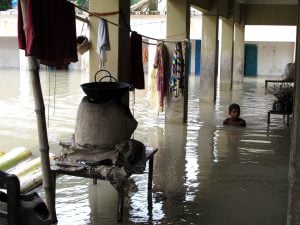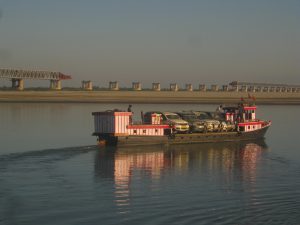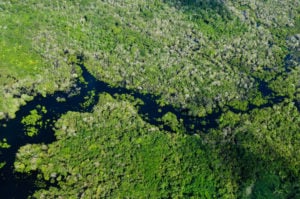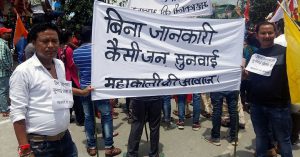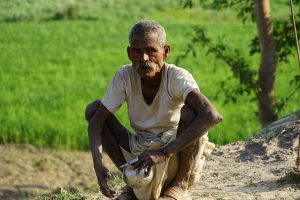In a relief camp on the Amtola embankment in the town of North Lakhimpur, Kulen Gogoi has been preparing the last rites for his father who was washed away by a flash flood on July 10. On Majuli, an island in the Brahmaputra river near the town, Gangaram Hazarika’s last rites were also held on the embankment. A hundred kilometres away in the town of Numaligarh, Deepak Bora cremated his mother’s body on the national highway.
The recent wave of flooding across the state of Assam in north-eastern India has left a trail of devastation. Around 450,000 people are now taking shelter in relief camps, according to the Assam State Disaster Management Authority, while unofficial sources claim that 200 people were killed.
Dam-induced floods wreak havoc
In the early hours of July 10, flash flooding from the Ranganadi river inundated hundreds of villages in Lakhimpur and Dhemaji districts on the northern bank of the Brahmaputra and in Majuli. Surging waters swept away houses, people and livestock and forced tens of thousands of villagers to flee to safety. The sudden rise in water levels is said to have been caused by the dam for the 405-megawatt hydropower plant at Yazali in Arunachal Pradesh, run by the North Eastern Electric Power Corporation (NEEPCO). Water was released from the dam without notice, catching the districts’ administrations and 300,000 people off-guard. Flood waters damaged drainage channels under National Highway 15 between Lakhimpur and Dhemaji and washed away a 50-metre stretch of embankment at Bogalijan in Lakhimpur.
Several organisations in the state, including the All Assam Students Union and the Krishak Mukti Sangram Samity, have demanded that the state and central governments figure out a permanent solution to the frequent floods, and de-commission the Ranganadi dam. The organisations also warned that NEEPCO should be ready to face dire consequences if it does not adequately compensate those affected.
The Ranganadi dam has been the main cause of flash flooding in and around Lakhimpur district, adversely affecting the environment and socio-economic conditions of its people. In a statement, the North East Dialogue Forum has stated that NEEPCO is guilty of human rights violations. The forum has demanded a review of project operation rules.
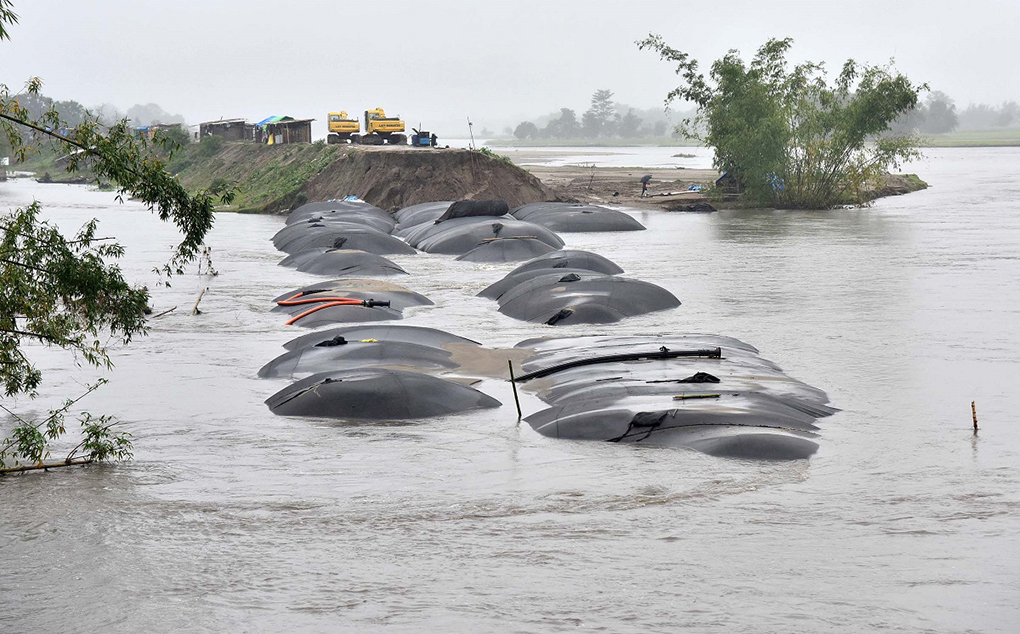
Kiren Rijiju, minister of state for home affairs in the central government, called the flooding “a calamity of severe nature”, adding that the national government has earmarked one billion rupees to find a permanent solution.
The challenge
Floods have occurred in the Brahmaputra Valley annually since 1950, and every year they leave the region crippled. Some 40 years ago, Sarat Chandra Sinha, the then chief minister of Assam, appealed to the people to learn to live with the river in spate. But without effective solutions or policies, things remain unchanged.
Embankments along the Brahmaputra and its 103 tributaries in Assam were built based on 15- to 20-year-old flood data. Those ageing embankments often collapse once the water begins to overflow, turning floods – a boon of nature – into a bane. Most of the embankments have outlived their lifespan and the need for their major overhaul is pressing, but only minor repairs have been carried out over the years due to a lack of money. Repair works were only done on some embankments this year. Nine sections of the embankment in Majuli were washed away, and a portion of the Hatimura embankment was washed away in Kaliabor, creating havoc for the entire Nagaon district.
On July 25, a seven-member inter-ministerial team visited Assam to take stock of the floods. The team visited flood-hit districts of the Brahmaputra and Barak valleys and witnessed the damage and distress of the people, describing it as “profound and large-scale”. Sarbananda Sonowal, state chief minister, told the team that Assam has a proposal to develop 5,000 kilometres of road-cum-embankments as part of Prime Minister Narendra Modi’s programme for flood and erosion control.
The Assam government is also planning to reform the department to better cope with the floods every year. “Under the present set-up, it is impossible for the water resources department to tackle floods and erosion,” said officials. “Only major reform of the department with adequate funds can deal with the problems.” A move is also on the cards to procure two or three dredgers to dredge a few tributaries of the Brahmaputra, on an experimental basis, as the water-carrying capacity of the rivers diminishes every year, the officials added.

There has been no timely update about the floods this year. The flood monitoring system of the National Disaster Management Authority published its latest update on July 12. The Central Water Commission failed to issue timely flood warnings to the affected areas.
At a recent press conference in Guwahati, the state water resources minister said a state-of-the-art flood-monitoring and warning system would soon be in place. While data for forecasting is important, there are also questions on how the people will be warned.
China fails to share water flow data
Meanwhile, India’s Ministry of External Affairs (MEA) has said that the government has not received any hydrological data from China on the Brahmaputra and Sutlej rivers since May, despite a bilateral agreement, under which China provides water flow information twice a day during the monsoon season to help flood forecasting. India is the middle riparian country on the Brahmaputra, which flows from China to India to Bangladesh. India provides water flow data to Bangladesh from five points on the Brahmaputra, and from one point each on its tributaries – Teesta, Feni and Barak rivers.
Wildlife affected
As in most years, the flood has affected the world-famous Kaziranga wildlife sanctuary, the main home of the critically endangered one-horned rhinoceros. The floods force the rhinos to congregate in the few areas that are still above the water, making them easier prey for poachers.

![<p>The Brahmaputra (in the background) overflows its banks near Dhubri in Lower Assam during the August 2017 flood [Image by Sucharita Sen]</p>](https://dialogue.earth/content/uploads/2017/08/Assam_Flood_Brahmaputra_Dhubri_August_2017_Image_Sucharita_Sen.jpg)
![A flood affected resident of Jakhalabandha, Assam on the south bank of the Brahmaputra being evacuated on a raft on August 13, along with the family's livestock [Image by Biju Boro]](https://dialogue.earth/content/uploads/2017/09/Jakhalabandha-flood-300x200.jpg)


